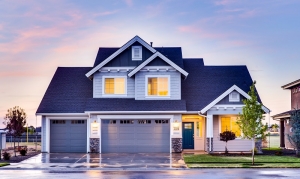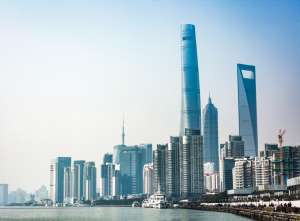Abu Dhabi is known for its villas and low-rise waterfront homes, but the demand for urban living has pushed developers to build taller, more modern residential towers. These projects combine large layouts, efficient planning, and strong construction standards — reflecting how the emirate’s lifestyle and housing market are evolving.
Developers are building more practical and private homes within the city. Demand for penthouses for sale in Abu Dhabi continues to rise as residents look for larger, managed spaces that offer comfort and quiet. Many new buildings now include top-floor units with wide views and well-planned interiors.
Better Planning and Building Standards
New residential towers in Abu Dhabi are designed around efficiency and comfort. Well-known developers such as Aldar, Bloom, and Reportage Properties have begun partnering with international architects and design studios including Foster + Partners, Woods Bagot, Broadway Malyan, and Aedas.
Many of the developments feature open-plan layouts, floor-to-ceiling glass façades for natural light, and interiors planned for functionality rather than decoration. In several projects, interior concepts are produced in collaboration with firms from London and Milan, bringing European standards of space optimization, materials, and detailing to the Abu Dhabi market. This mix of global design input and local construction expertise has noticeably raised the quality of new residential architecture in the city.
Where the Growth Is Concentrated
Several areas of Abu Dhabi now feature major new developments.
- Saadiyat Grove has become a central address near museums, galleries, and cafes, attracting residents who value culture and walkable surroundings.
- Reem Island continues to expand with residential and mixed-use projects close to the city’s business districts.
- Al Raha Beach offers large apartments and family homes along the coastline, combining urban convenience with a quieter setting.
- Ramhan Island, still in early development, will extend the city’s waterfront housing options with a focus on low-density planning and green design.
Together, these areas illustrate that the city is investing in projects balancing residential comfort with sustainability and urban accessibility.
Daily Life in Modern Towers
Residents in these towers often benefit from:
- Private terraces or rooftop lounges for upper-floor units
- Infinity or edge swimming pools with sea or skyline views
- Full wellness suites: spa rooms, sauna, premium gyms
- On-site dining/cafés, boutique retail, sometimes a small supermarket
- Managed services: concierge, security, maintenance handled professionally
- Direct access to leisure: private beach club or water access (in waterfront cases)
- Children’s play zones, BBQ/picnic areas and landscaped community gardens
These features reduce the need for daily commuting and help create stable, well-managed communities. As a result, many high-rise projects in Abu Dhabi maintain strong occupancy and consistent rental demand.
Sustainability and Energy Efficiency
Sustainability is now a key part of Abu Dhabi’s housing strategy. Every new project must comply with Estidama, a government initiative that sets performance standards for environmental efficiency, comfort, and long-term maintenance. The system, developed by the Abu Dhabi Urban Planning Council, uses a Pearl Rating (from one to five) to assess how well a building manages energy, water, and material use.
Moreover, many developers integrate smart home systems that allow residents to control lighting, air conditioning, and security from mobile devices. Buildings are also fitted with AI-driven energy management tools that adjust cooling or lighting based on occupancy and temperature, helping to reduce utility costs. Smart meters, motion sensors, and central monitoring platforms make operations more efficient for both residents and management teams.
A Clearer Picture of Urban Luxury
High-rise living in Abu Dhabi reflects how housing preferences are changing as the city grows denser and more connected. Many residents who once preferred villas are now choosing well-planned apartments and penthouses that offer the same comfort with easier maintenance and direct access to city life. In a tower, security, cleaning, and facility upkeep are handled by dedicated teams, while in a villa these responsibilities fall on the homeowner.
Sky residences also tend to be located closer to business districts, cultural venues, and schools, reducing daily travel time. Villas still appeal to families who want larger private plots and gardens, but the convenience and management quality of modern towers have made them a serious alternative for long-term living.
The city’s focus on long-term planning, sustainable building standards, and professional property management is shaping a more balanced market that supports both resident comfort and investment stability.
FAQ
- What are the main differences between new and older residential buildings in Abu Dhabi?
New projects offer better soundproofing, more natural light, improved insulation, and modern building management systems. - Which areas in Abu Dhabi currently have the highest number of new towers?
Saadiyat Island, Reem Island, Al Raha Beach, and the developing Ramhan Island are the main hubs for new residential towers. - How is Abu Dhabi encouraging sustainable construction in residential projects?
Through Estidama standards, developers in Abu Dhabi must meet energy-efficiency targets covering cooling systems, insulation, lighting, and water use. - What amenities are usually offered in new residential towers in Abu Dhabi?
Modern buildings often include fitness centers, swimming pools, concierge services, landscaped areas, and on-site retail or dining options. - Are new apartments in Abu Dhabi attracting both local and international buyers?
Yes. Many developments are freehold, which allows both UAE nationals and foreign residents to purchase property directly, increasing overall demand. - How do maintenance and management work in Abu Dhabi’s new high-rise communities?
Developers or appointed facility-management companies handle cleaning, security, and technical maintenance, providing a consistent living standard for residents.
Abu Dhabi is known for its villas and low-rise waterfront homes, but the demand for urban living has pushed developers to build taller, more modern residential towers. These projects combine large layouts, efficient planning, and strong construction standards — reflecting how the emirate’s lifestyle and housing market are evolving.
Developers are building more practical and private homes within the city. Demand for penthouses for sale in Abu Dhabi continues to rise as residents look for larger, managed spaces that offer comfort and quiet. Many new buildings now include top-floor units with wide views and well-planned interiors.
Better Planning and Building Standards
New residential towers in Abu Dhabi are designed around efficiency and comfort. Well-known developers such as Aldar, Bloom, and Reportage Properties have begun partnering with international architects and design studios including Foster + Partners, Woods Bagot, Broadway Malyan, and Aedas.
Many of the developments feature open-plan layouts, floor-to-ceiling glass façades for natural light, and interiors planned for functionality rather than decoration. In several projects, interior concepts are produced in collaboration with firms from London and Milan, bringing European standards of space optimization, materials, and detailing to the Abu Dhabi market. This mix of global design input and local construction expertise has noticeably raised the quality of new residential architecture in the city.
Where the Growth Is Concentrated
Several areas of Abu Dhabi now feature major new developments.
- Saadiyat Grove has become a central address near museums, galleries, and cafes, attracting residents who value culture and walkable surroundings.
- Reem Island continues to expand with residential and mixed-use projects close to the city’s business districts.
- Al Raha Beach offers large apartments and family homes along the coastline, combining urban convenience with a quieter setting.
- Ramhan Island, still in early development, will extend the city’s waterfront housing options with a focus on low-density planning and green design.
Together, these areas illustrate that the city is investing in projects balancing residential comfort with sustainability and urban accessibility.
Daily Life in Modern Towers
Residents in these towers often benefit from:
- Private terraces or rooftop lounges for upper-floor units
- Infinity or edge swimming pools with sea or skyline views
- Full wellness suites: spa rooms, sauna, premium gyms
- On-site dining/cafés, boutique retail, sometimes a small supermarket
- Managed services: concierge, security, maintenance handled professionally
- Direct access to leisure: private beach club or water access (in waterfront cases)
- Children’s play zones, BBQ/picnic areas and landscaped community gardens
These features reduce the need for daily commuting and help create stable, well-managed communities. As a result, many high-rise projects in Abu Dhabi maintain strong occupancy and consistent rental demand.
Sustainability and Energy Efficiency
Sustainability is now a key part of Abu Dhabi’s housing strategy. Every new project must comply with Estidama, a government initiative that sets performance standards for environmental efficiency, comfort, and long-term maintenance. The system, developed by the Abu Dhabi Urban Planning Council, uses a Pearl Rating (from one to five) to assess how well a building manages energy, water, and material use.
Moreover, many developers integrate smart home systems that allow residents to control lighting, air conditioning, and security from mobile devices. Buildings are also fitted with AI-driven energy management tools that adjust cooling or lighting based on occupancy and temperature, helping to reduce utility costs. Smart meters, motion sensors, and central monitoring platforms make operations more efficient for both residents and management teams.
A Clearer Picture of Urban Luxury
High-rise living in Abu Dhabi reflects how housing preferences are changing as the city grows denser and more connected. Many residents who once preferred villas are now choosing well-planned apartments and penthouses that offer the same comfort with easier maintenance and direct access to city life. In a tower, security, cleaning, and facility upkeep are handled by dedicated teams, while in a villa these responsibilities fall on the homeowner.
Sky residences also tend to be located closer to business districts, cultural venues, and schools, reducing daily travel time. Villas still appeal to families who want larger private plots and gardens, but the convenience and management quality of modern towers have made them a serious alternative for long-term living.
The city’s focus on long-term planning, sustainable building standards, and professional property management is shaping a more balanced market that supports both resident comfort and investment stability.
FAQ
- What are the main differences between new and older residential buildings in Abu Dhabi?
New projects offer better soundproofing, more natural light, improved insulation, and modern building management systems. - Which areas in Abu Dhabi currently have the highest number of new towers?
Saadiyat Island, Reem Island, Al Raha Beach, and the developing Ramhan Island are the main hubs for new residential towers. - How is Abu Dhabi encouraging sustainable construction in residential projects?
Through Estidama standards, developers in Abu Dhabi must meet energy-efficiency targets covering cooling systems, insulation, lighting, and water use. - What amenities are usually offered in new residential towers in Abu Dhabi?
Modern buildings often include fitness centers, swimming pools, concierge services, landscaped areas, and on-site retail or dining options. - Are new apartments in Abu Dhabi attracting both local and international buyers?
Yes. Many developments are freehold, which allows both UAE nationals and foreign residents to purchase property directly, increasing overall demand. - How do maintenance and management work in Abu Dhabi’s new high-rise communities?
Developers or appointed facility-management companies handle cleaning, security, and technical maintenance, providing a consistent living standard for residents.






